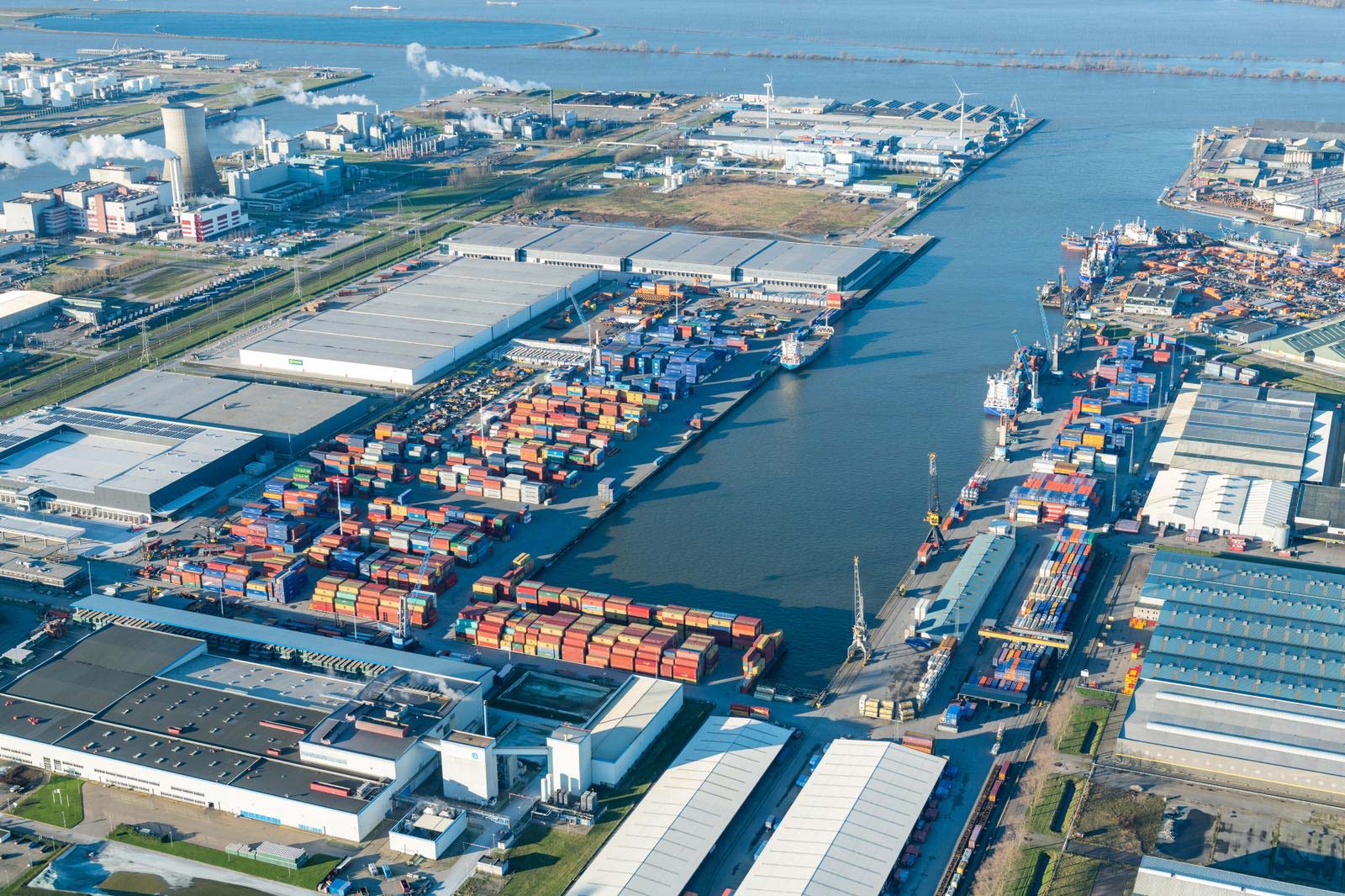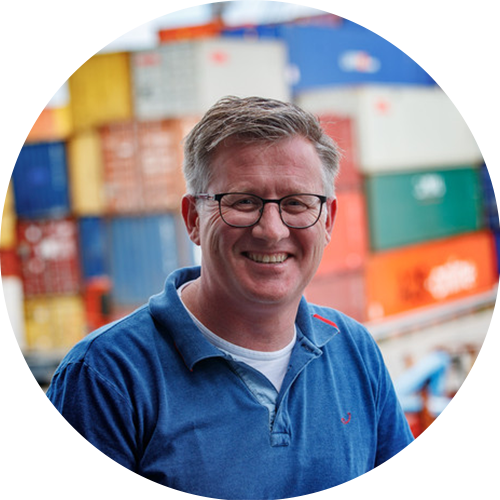Long-term collaborations are forged in Moerdijk.
How does the Port of Moerdijk accomplish this?
Directors Albert van Ommen of Euro-Rijn, Luc Smits of Combined Cargo Terminals Moerdijk and Kees Groeneveld of Euro Nordic enjoy working together.
Euro-Rijn has several terminals in Moerdijk, including one for the storage and transhipment of bulk and general cargo. CCT Moerdijk is known for its shortsea terminal: the ideal hub for transport to and from the European hinterland. And Euro Nordic provides the entire logistics chain in a single package: from sea, air and land transport to storage, customs facilities, distribution, packaging and processing.
Smits says that almost 70% of shipped containers in Moerdijk are handled by the these three parties. According to Smits, Moerdijk can be proud of how the port has developed over the past 20 years into what it is today.
The parties make use of each other’s added value at Moerdijk. A prime example of the cooperation is CCW.
The three started a joint company in 2007: CCW Combined Cargo Warehousing. Van Ommen: “A large part of Elkem’s [a Norwegian company active in electrochemicals] goods are stored here.” A new five-year contract was recently signed with Elkem. Van Ommen says that what is unique is that the warehouse is located on the CCT Moerdijk site.
“The combination of a container terminal with the warehouses right next to it is great.” This has resulted in a growth from 9,000 to 30,000 square metres of warehouse space from which the distribution takes place from Moerdijk to destinations in Germany, France, Italy, Poland, the Czech Republic and Hungary.
Van Ommen and Groeneveld have additional joint projects. For instance, they set up Multi Cargo Logistics (MCL) in Moerdijk together. MCL provides companies in the food, feed and pharmaceutical sectors with storage, transhipment and supply of ingredients and additives. The two also founded Libra Shipping: a ship broker and ship agency specialising in coastal shipping. Van Ommen: “We play the ball to each other whenever possible.”
Furthermore, they are working together with the start-up CargoSnap. This company offers a platform and app for collecting and sharing information about the condition of goods at transhipment terminals and storage and distribution centres. “Its development took place in our warehouses. We both financed a part of it. And of course we use it ourselves.”
Container crisis
Van Ommen says that on certain routes, container prices have more than tripled. “At the moment, trade also remains on the quayside because of the congestion in the port, while the next large volume is already on its way. This is linked to the consumer’s frenzied shopping activities.” MCL, for example, suffers from this. The traders, the producers in particular, of raw materials simply do not ship now. It is unaffordable.
This means that MCL automatically receives fewer containers. However, there is more cargo coming from France instead of Thailand. “Companies are looking for something closer to home, to get more reliable logistic supply lines.” The corona crisis has made this clear. The tricky thing about the container crisis, according to Van Ommen, is that nobody knows when it will end.
Groeneveld summarises the crisis as follows: “Incidents such as the corona crisis and the blockage of the Suez Canal, but also a shortage of containers and soaring freight prices.” Industries now see a greater need to have strategic stocks of raw materials to ensure production continuity during such incidents. The use of synchromodality will also help to ensure a reliable flow of cargo.
Transport hub
According to Van Ommen, Moerdijk is the ideal transport hub: from seagoing vessels to inland shipping, and trains. “Moerdijk has it all.” Van Ommen says that sustainable cooperation is also very important. An example of this is MCT’s empty depot, which is part of CCT. This is where the large shipping companies can deliver and collect their empty containers. “This is perfect for the port of Moerdijk and the companies operating here. Everyone can make use of each other’s containers for export purposes.” This prevents a large number of empty containers being transported by road.
The three parties do not only work with each other, but also with more companies on the Moerdijk port and industrial estate. Groeneveld: “Our cargo from Norway for the UK is shipped further by A2B-online. So there is always interaction between companies.” According to Groeneveld, one of Moerdijk’s strengths is recognising the added value and specific knowledge of other parties. “The place where you want to cooperate for each other’s business success.”
Groeneveld also praises the rail connections that his customers are very happy about. Especially because of the sustainable advantage. Smits adds: “CCT’s three-track rail terminal is also very important.” Because the rail terminal extends all the way to the quayside, direct transhipment is possible between train and barge and between train and shortsea vessel. “Good connections or an overflow track are now needed. The government must invest in this.”
Van Ommen expects even more growth in Moerdijk, partly due to the arrival of the Logistics Park Moerdijk (LPM). “There will be an internal road between LPM and the existing port area.” Van Ommen says that the internal road means a lot to the container terminal: “Even more volume, which strengthens the Moerdijk logistics hub.” It has been a good investment by the Port of Moerdijk.
What unique to Moerdijk is, notes Groeneveld, is the entrepreneurship of family-oriented companies with short lines of communication. Smits: “The cooperation between the three of us, customer and supplier, has been rock solid for years and we always keep each other on our toes.”



